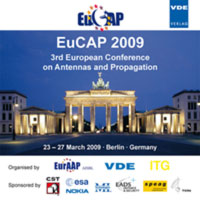New Results for Minimum Q, Maximum Gain, and Polarization Properties of Electrically Small Arbitrary Antennas
Conference: EuCAP 2009 - 3rd European Conference on Antennas and Propagation
03/23/2009 - 03/27/2009 at Berlin, Germany
Proceedings: EuCAP 2009
Pages: 4Language: englishTyp: PDF
Personal VDE Members are entitled to a 10% discount on this title
Authors:
Pozar, David M. (Electrical and Computer Engineering, University of Massachusetts Amherst, Amherst, MA USA)
Abstract:
This paper will review previous and recent work on the maximum gain and minimum Q of arbitrary lossless antennas, with the goal of trying to eliminate some of the confusion, incompleteness, and erroneous statements that sometimes occur in the literature. Our attention will primarily focus on the effects of polarization and the presence of TM, TE, or TM and TE modes, on the maximum gain of arbitrary antennas, and the minimum Q of electrically small antennas. It will be shown that it is useful to categorize both linearly and circularly polarized small antennas according to the presence of either electric (or magnetic) sources in isolation, or the presence of both electric and magnetic sources, and that the minimum Q for these two cases may differ by a factor of two, while the maximum achievable gain may be either 1.5 or 3. These and other recent results will be discussed, hopefully to provide a more complete picture of some of the fundamental limits on antenna performance.


